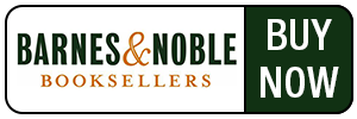It is simple in its approach and powerful in its effect—a diet of natural foods and the use of non-invasive home remedies made from natural food products, designed to eliminate many symptoms of disease and strengthen your body’s healing power. It is a philosophy of healing rooted in centuries-old traditions. In the past, these traditions were passed from generation to generation by word of mouth. Today, the macrobiotic movement embodies these dietary principles of natural healing. Michio Kushi, a leading figure in this movement, has spent his life teaching thousands of people the macrobiotic way to health. Here is an easy-to-understand book that puts his knowledge right at your fingertips.
Macrobiotic Home Remedies is a comprehensive self-help guide to hundreds of effective, natural healing methods that can be used alone or in conjunction with more standard remedies—methods that heal without drugs or invasive treatments. The book is divided into three sections. Part One begins by explaining the philosophy and healing concepts underlying the macrobiotic approach. It then goes on to examine various foods and their healing properties as well as basic home remedies. Part Two details external home therapies and techniques—including over two hundred healing preparations. Illustrations are provided throughout this section. Part Three presents an A-to-Z reference to over two hundred common health disorders. Within each entry you will find a general explanation of the problem, including the macrobiotic view, and helpful suggestions for relief.
For years, Michio Kushi has dedicated his life to teaching the macrobiotic way to better health. Now the wealth of his knowledge is available to you and your family in this complete guide to this gentle, yet effective, art of healing.
Michio Kushi came to the United States shortly after World War II upon completing studies at Tokyo University. Since then, he has lectured on macrobiotics; the meeting of East and West; traditional Asian medicine, philosphy, and culture; and the realization of world peace and planetary harmony. Mr. Kushi is the founder and president of the East West Foundation, Kushi Institute, Kushi Foundation, and Macrobiotics International. He is the bestselling author of numerous books, including Your Body Never Lies, The Cancer Prevention Diet, and The Book of Macrobiotics. As the leading voice in macrobiotics, Mr. Kushi spoke throughout the world on this topic.
Marc Van Cauwenberghe, MD received his medical degree from the University of Ghent in Belgium. Fascinated by philosophy of Asian and macrobiotic medicine, he started to practice macrobiotics in his own life and was impressed with the gradual improvements in his physical, mental, and spiritual health. Dr. Van Cauwenberghe has lectured extensively throughout North America and Europe, and has translated several books and articles of George Ohsawa into English. He currently resides at the Ionia macrobiotic community in Kasilof, Alaska.
Table of contents
Acknowledgement,
Preface,
Introduction,
1. Understanding Food as Energy,
Yin and Yang,
Ki,
The Human Body,
Food and Asian Medicine,
2. Applying Food Energetics,
Applying Food Energetics in Combining Foods,
Applying Food Energetics in Food Processing,
Applying Food Energetics in Preventing and Curing Illness,
Counterbalancing the Energies of Specific Foods,
Treating Specific Symptoms and Diseases,
3. Basic Food Items as Home Remedies,
Beans and Bean Products,
Fruits,
Grains,
Land Vegetables,
Sea Vegetables,
Seafood and Fish,
Seeds and Nuts,
4. Seasonings and Condiments as Home Remedies,
Barley Malt,
Ginger,
Gomashi,
Horseradish,
Miso-Based Condiments,
Rice-Based Condiments,
Sea Vegetable-Based Condiments,
Soy Sauce-Based Condiments,
Umeboshi-Based Condiments,
5. Macrobiotic Drinks as Home Remedies,
Japanese Traditional Teas,
Salt-Based Drinks,
Grain-Based Drinks,
Vegetable-Based Drinks,
Seed-Based Drinks,
Bean and Sea Vegetable-Based Drinks,
Kuzu-Based Drinks,
Umebosi and Ume-Based Drinks,
Varia,
6. Treating Specific Organs, 000
The Selection of the General Style of Cooking,
Specific Preparation Techniques,
The Selection of Specific Side Dishes and Condiments,
7. Traditional Asian Herbal and Mineral Medicine,
Basic Principles in Using Medication,
Plants Used as Medicine,
Animals Used as Medicine,
Minerals Used as Medicine,
Combination of Materials,
PART II Macrobiotic External Home Remedies
8. Compresses, Plasters and Pack,
Compress or Fomentation,
Plaster or Poultice,
Packs and Bags,
9. Baths,
Ginger Bath,
Mustard Bath,
Dried Daikon Leaves Bath,
Bran Bath,
Hot Salt Water Bath,
Cold Salt Water Bath,
Lemon Bath,
10. Solutions Used as Rinses, Enemas, Douches and Gargles,
Salt Water,
Salted Bancha,
Hiba Water,
Hiba-Ginger Water,
Wood Ash Water,
Umeboshi Juice,
Lotus Powder Decoction,
11. Lotions, Drops and Powders,
Sesame Oil,
Sesame Oil With Ginger (Ginger Oil),
Lemon Juice,
Rice Bran Oil (Nuka Oil),
Radish Juice or Daikon Juice,
Turnip Juice,
Cucumber Juice or Cucumber Stem Juice,
Mugwort Juice,
Shiso Leaf Juice,
Fig Tree Stem Juice,
Dry Salt,
Dentie,
Egg Ashes,
Abdominal Pain,
Anorexia,
Anemia,
Apoplexy,
Appendicitis,
Appetite, Loss of,
Asthma Attack,
Biliary Colic,
Bites and Stings,
Bleeding,
Bruises,
Burns and Scalds,
Carbon Monoxide Poisoning,
Cerebral Hemorrhage,
Colds,
Colic,
Concussion,
Constipation,
Convulsions,
Coughs,
Cramps,
Cuts and Wounds,
Diarrhea,
Dislocations,
Fatigue,
Fever,
Fits,
Food Poisoning,
Fractures and Dislocations,
Gallstones,
Gas Poisoning,
Headache,
Heartburn,
Hemorrhage,
Hiccups,
Hoarseness,
Inflammation,
Intestinal Colic,
Kidney Stone Attack,
Loss of Vitality,
Laryngitis, 000
Leg Cramps,
Loss of Vitality,
Menstrual Cramps,
Migraines,
Mild Brain Injury,
Nausea and Vomiting,
Night Cramps,
Nosebleeds,
Pain, General,
Poisoning,
Poison Ivy Rash,
Renal Colic,
Scalds,
Seizures,
Sore Throat,
Splinters,
Sprains and Strains,
Stomach Bleeding,
Stomach Cramps,
Strains,
Stroke,
Swallowing an Object,
Swelling,
Tiredness,
Toothache,
Ulcers,
Uterine Bleeding,
Vaginal Discharge,
Vitality, Loss of,
Vomiting,
Weakness,
Worms, Intestinal,
Wounds,
Bibliography,
About the Author,
Index,
Introduction or preface
Macrobiotics in its modern form was first spread throughout the world by the activities of George Ohwasa (1897-1966). He devoted most of his life to this goal. His efforts were a manifestation of his gratitude. He was grateful because after becoming acquainted with this way of thinking at the age of eighteen, he overcame of a number of severe health disorders in several months, including a case of tuberculosis. He called this way of thinking and viewing life, “the Unifying Principle,” and its application in daily life, “Macrobiotics.”
Initially, Ohsawa focused his studies on how the macrobiotic approach worked to combat common health issues. He was very impressed with the effectiveness of the taro potato plaster in treating inflammations, abscesses, and wounds. Next, he confirmed in daily practice the healing properties of ginger compresses, daikon radish drinks, and lotus roots. He also made use of acupuncture.
During this period he gradually discovered the fundamental influence of our dietary habits on the development of our human capacity to behave; that is, to understand, rationalize, make decisions, and act upon those decisions. He reasoned that the behavioral problems of humankind are due to a distorted development based on an imbalanced diet. It seemed to him that it was not only the general population who suffered from this condition, but specifically its political, religious, and educational leaders. He devoted the rest of his life to spreading this macrobiotic view and way of living with the hope of establishing a complete biological and physiological rebirth of mankind, whose physical, mental, and spiritual health he saw as gradually declining.
He believed that the reestablishment of a sane capacity for judgment through biological restoration was the only hope for humankind to create world peace. In the last part of his life, Ohsawa changed his focus from healing to prevention. During this period he became more and more interested in researching, experimenting, and teaching about the influence of specific foods on health and disease. He wrote numerous books about his findings.
In this book, the macrobiotic methods and applications are presented in three sections. Part I deals with foods as home remedies, providing an understanding of the use of food as an energy force, and how to apply food energetics. This section also outlines the use of basic food items, seasonings and condiments, and preparations for drinks to be used as home remedies and their use in treating specific organs. It also describes the uses of traditional Asian herbal and mineral medicine to restore health. Part II of the book provides various macrobiotic external home remedies along with an explanation for preparation and application. Part III presents an A-to-Z listing of health conditions, their symptoms, and their macrobiotic treatment.
The preparations and techniques described in this book are mainly examples of macrobiotic home care or remedies, as Ohsawa rediscovered them in the beginning of the twentieth century. We call them macrobiotic for several reasons:
· They are efficient.
· They are relatively inexpensive; neither the individual nor the state will become bankrupt by their use.
· They do not produce undesirable side effects, unless they are prepared or applied incorrectly or for the wrong reason.
· Their production, preparation, and application do not harm our environment.
· They are easy to prepare and to apply. They do not demand a large medical or paramedical staff.
· They bring medicine back within the reach of the family.
· They are based on yin-yang or dynamic, complementary thinking.
Although these methods of dealing with problems are often more or less symptomatic, we have tried to describe them in enough detailto make them accessible to everyone.
· Many of the described methods will only be effective if you have also changed your way of eating. However some of these methods, such as a ginger compress, are so powerful that anyone can be helped by them, although only temporarily. Experiencing the effectiveness of a treatment which is radically different from conventional medicine can create a turning point in your thinking.
· Applying these methods can strengthen all macrobiotic students’ interest and trust in the macrobiotic way of healing. They make it seem more and more obvious that an expensive and technically complicated medicine is unnecessary in most cases.
· If you eat macrobiotically, you will not usually need such symptomatic treatments. Your daily way of eating will ensure the smooth and gradual elimination of toxins and excesses. However, it is not always possible to eat so well! Instead of waiting for the body to clean itself gradually, we can speed up or sustain this process by applying one of the topical methods.
· It is especially useful to apply these methods when you have just started to eat macrobiotically, as the body’s eliminatory processes are more active at this time.
· Sometimes we really need symptomatic treatments. Even when one eats macrobiotically, natural eliminatory processes can be troublesome.
--They can sometimes be very painful, such as the process of discharging kidney stones.
--They can sometimes be excessive and exhausting, such as a heavy diarrhea arising after taking some harmful food.
--They can sometimes be dangerous, such as a high fever.
In order to make these changes more tolerable, and to let them happen in a more controlled way, the macrobiotic home remedies are important. This book only explains a portion of the preparations and techniques that are used in macrobiotic homecare. There are a number of other very helpful and often necessary ways of dealing macrobiotically with health problems, which are not covered here. We do not, for example, talk about using shiatsu massage, moxibustion, or palm healing in homecare. Also, we do not talk in great detail about the preventive use of the general macrobiotic way of eating. For this we refer you to other macrobiotic publications which are listed in the reference section of this book.
It is our hope that the study and application of the methods presented in this book will contribute to the development towards health, freedom, peace and happiness of all who read it and society as a whole.





